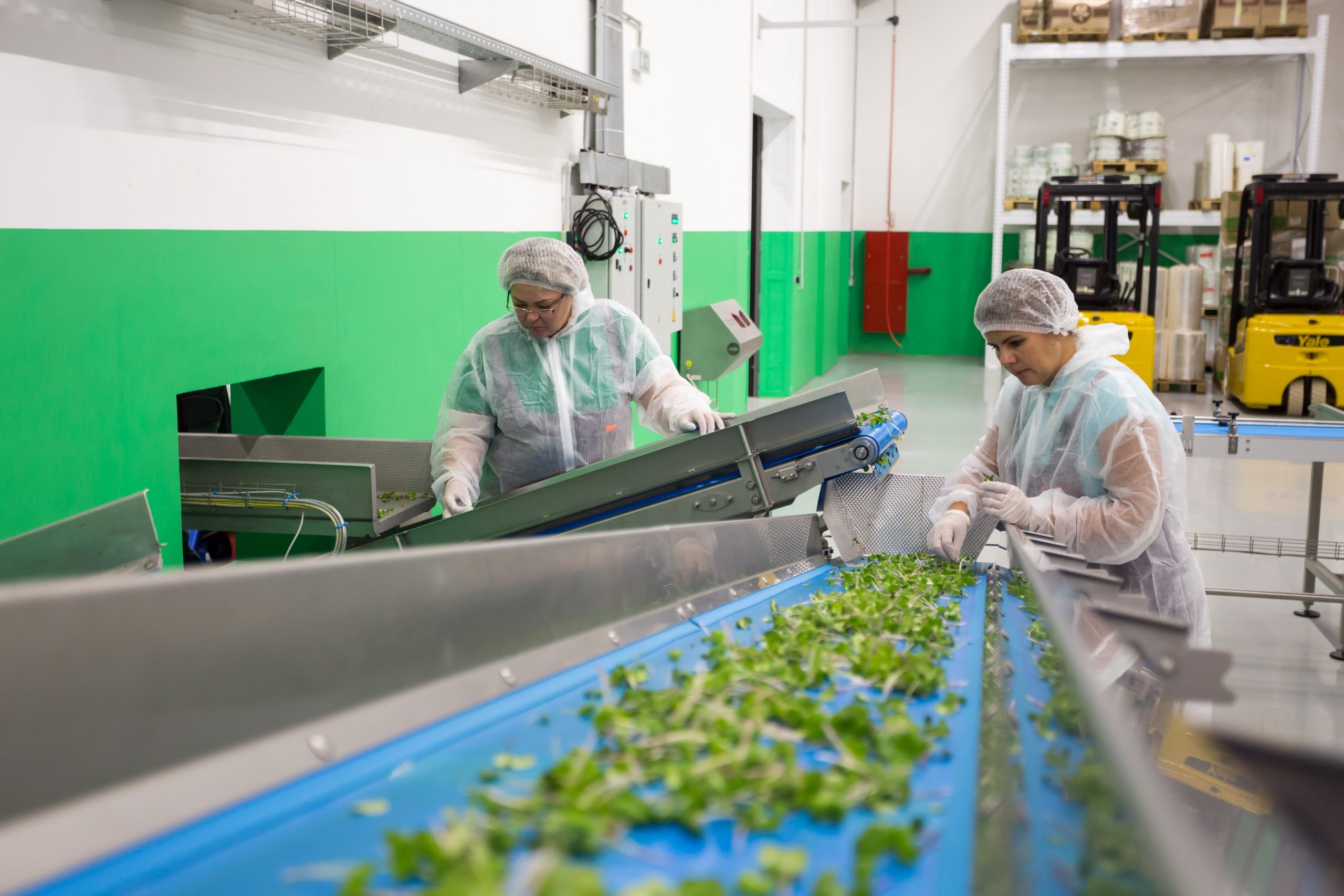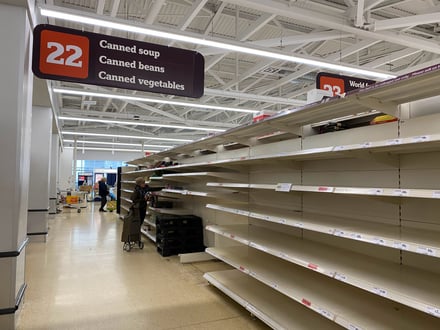The Food Industry is a core building block of the UK economy, and one of the biggest contributors to employment and taxation. When talking about the Food Industry in the UK, it’s important to note that it is a vast concept that encompasses more than just the traditional idea of food, but also the jobs, logistics, and venues associated with food consumption as an end goal.
What Does the UK Food Industry Encompass?
The Food and Drink industry is UK’s largest manufacturing sector, accounting for 20% of it and contributing over £28bn to the UK economy just in the last year. Perhaps surprising to some, but the Food and Drink Industry contributes more than the automotive and the aerospace industry. Food and Drink manufacturers directly employ over 468,000 people in the UK, which increased positively even during COVID-19 - a 3.4% increase from 2020.
The UK exports Food & Drink products to over 220 countries and territories globally, with the top markets being Ireland, France and the USA.

From a commercial point of view, the Food industry impacts every aspect of our lives - from day-to-day shopping to social activities.
“First, we have bulk retail or food supermarkets (the FMCG - fast moving consumer goods), which are slowly adding restaurants, cafes and dining elements to their real estate. On the other side we have the standard restaurant format, which itself encompasses many different formats - takeaway / grab-and-go, quick service, casual dining, smart casual, mid-scale, and fine dining.
Then we turn to the world of food retail and dining - incorporating sit down and dining environments, the emergence of food halls and dining halls has really been established in the last 10 years. The more we look around the more we see the merging of formats within the commercial side of the food industry - shopping, experiencing, taking the restaurant experience home, fashion and lifestyle.” says Emmett Loughran, Managing Partner at TGP International.
Measurable Worth of the UK Food Industry

The UK’s Food and Drink market is valued at more than £100 billion, and its continuous growth has ensured that the number is rising proportionally every year.
Due to this positive outlook, the UK is not short of opportunities for increasing the industry’s worth even more and the economical challenges faced over the last few years are expected to not leave a lasting impact.
Challenges for the UK Food Industry
Despite Brexit, Covid-19 and the current war in Ukraine, which have all had a significant economic impact that has been felt across Europe and the world, the UK’s Food and Drinks industry has been remarkably resilient and continued to grow over the last few years.
1. Brexit
 Whilst the airtime given to talks and discussions about the impact of Brexit has decreased significantly, the EU-exit is still having a notable impact on the UK’s Food industry.
Whilst the airtime given to talks and discussions about the impact of Brexit has decreased significantly, the EU-exit is still having a notable impact on the UK’s Food industry.
A primary issue that has been felt across all Food-related sectors, has been the significant decrease in staffing. According to MPs said vacancies in the Food sector were estimated to be 500,000 out of 4.1 million roles in August 2021. The failure of the government to tackle this issue is predicted to “permanently” shrink the sector.
Of course, this is not an unavoidable situation - just one that has been conveniently ignored. The new points-based immigration system makes it essentially impossible for those workers to return, even if they wanted to. Professionals who are now classified as Skilled Worker if:
- They have a job offer from a Home Office licensed sponsor (the employer)
- The job offer is at the required skill level – RQF 3 or above (A Level and equivalent)
- They speak English to the required standard
In addition to this, the job offering must meet the applicable minimum salary threshold. This is the higher of either:
- The general salary threshold of £25,600, or
- The specific salary requirement for their occupation, known as the ‘going rate’
Whilst these requirements are “technically” achievable, the practical side is different. Jobs in the Food & Drinks Industry are often based on 0 hour contracts, and the “going rate” is almost impossible to determine. Then there’s the issue of the employer/sponsor - a specific “sponsor licence” is required for any enthusiastic businesses.
Another notable change has been the reduction of direct exports to EU countries, following the impact on trade agreements and introduction of new customs regulations, negatively impacting transport and logistics.
A notable 47% drop in exports since Q1 of 2020 has been felt by farmers and food producers, and the shortage of workforce is evident in both hospitality and production, especially around more remote and smaller places in the country.
Of course the logical and right reaction, which many business owners have adopted, is to look into other international markets - however, the profits from those may take a while to reach the levels of what was brought in by EU trade, as it takes time to establish a brand on a completely new, international market.
Brexit has impacted on the trade agreements that until recently bound the UK to the single market: the most immediate consequence has been a reduction in direct exports to the EU.
2. Ageing Workforce

This challenge is often disregarded or left out of reports, but the issue with an ageing workforce, especially in the Food & Drink sectors related to production, is presenting a rising challenge. Lower birth rates, ageing population close to retirement, and conditions that are undesirable by today’s youth have led to production delays and staffing shortages.
The future solution likely lies in automotion and improvement of the existing facilities and policies. However, for that to happen, the producers will have to invest even more in upgrades at every level of the chain. It is also likely that more technical-based and operating jobs will attract a younger workforce, which is comfortable with navigating the latest tech innovations.
3. COVID-19
 It is not possible to address challenges in any sector without looking at the impacts of the COVID-19 pandemic.
It is not possible to address challenges in any sector without looking at the impacts of the COVID-19 pandemic.
The food and drinks manufacturing was severely affected with factories having fewer staff due to social distancing and sickness. Investment was required to review and upgrade facilities to accommodate to these changes when profits were already low. Extra capacity and storage facilities were also required, to manage sudden lockdowns or panic-buying.
In the hospitality part of the sector, restaurants struggled with keeping employees during the short times venues were allowed to reopen and having to constantly upgrade to meet government requirements.
Two years later, when the last lockdown rules were cautiously lifted and the demand started increasing, employers found that the workforce has decreased, with many individuals leaving the sector because of the ongoing uncertainty.
As specialists in the Food and hospitality industries, TGP International had first-hand observations and experience of the COVID-19 impact:
“The simple answer is nobody in the world has ever dealt with a situation like Covid on a business level, so we are all seeing something new, a new challenge. Everyone has been affected, there are no two ways about it. We can see it by shops closing on the high street, supply chain was affected from the get-go and issues with supermarkets. It has all been affected.
But the most important thing is: “Have we returned to some sort of normality and stability?” Yes, and we have seen as the pandemic was unlocking and relocking, that numbers were returning to normal when places were unlocking. We can see things coming back to normal, so we are confident it’ll all bounce back but we need to make sure we’re on the right path with recovery first.” says Emmett Loughran, Managing Partner at TGP International.
Growth Opportunities for the Food Industry in the UK

Despite all the challenges, the Food and Drinks industry is optimistic when it comes to future growth. The revenue is rising, there is notable growth, even if it has been slightly slower than the original pre-pandemic predictions.
The USA is always an important export market, and currently the third biggest for the UK. The vastness and opportunities of the Chinese market cannot be underestimated. The increase of the purchase power of the middle class in Japan, UAE and India has opened the doors for highly valued and desired products of the UK economy.
UK Spirits, chocolate and cheese continue to be products of high interest on the international markets (spirits predominantly in the West). Gin, craft beer and cider, which are so familiar to the British public are gaining popularity across the ocean.
Europe is not lost either - exports to Norway increased to 40% in 2020, with Scandinavians valuing high-quality, sustainability and traceable sources of their food.
TGP’s Managing Partner, Emmett, adds: “The Food industry will continue to grow and bounce back even stronger. The last few years have increased the strength of brands and the strength of their operations. It is “survival of the fittest” at the end, but I think this is a good thing for the industry.
We’ll see a lot more people test and try things; more entrepreneurs will continue to enter the space which can get quite interesting. People have had time to be at home, thinking about new concepts and what they want to do next, and that could lead to a refresh of the market and new ideas and trends, which is great. It’s a positive outlook.”
TGP International’s team of specialists has years of experience coming from every side of the Food & Drink market, not just in the UK but internationally. This allows us to define and predict the market with accuracy, benefiting our clients both in the short-term and with their long-term strategy.
-1.png?width=3330&height=698&name=TGP%20International%20Logo%20White%20(1)-1.png)

